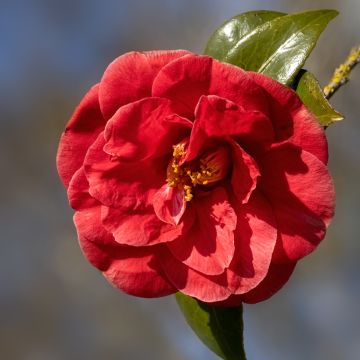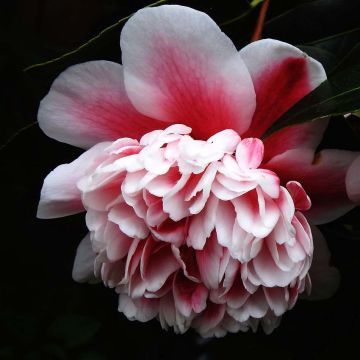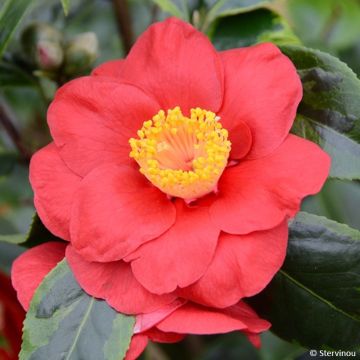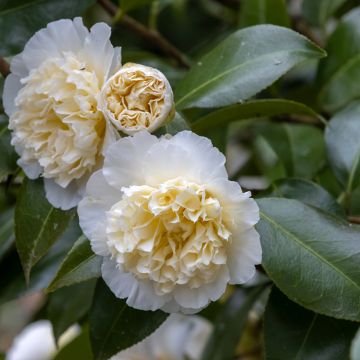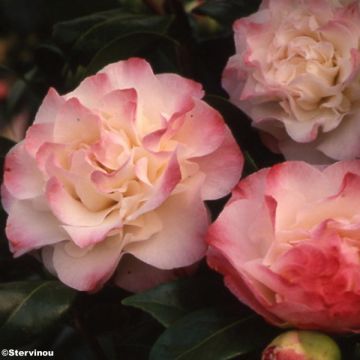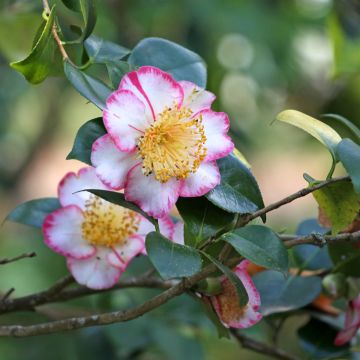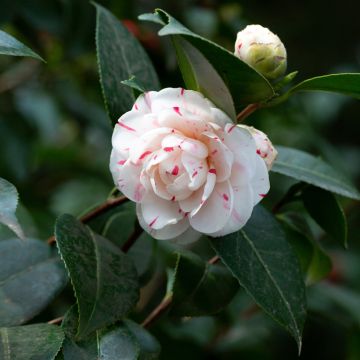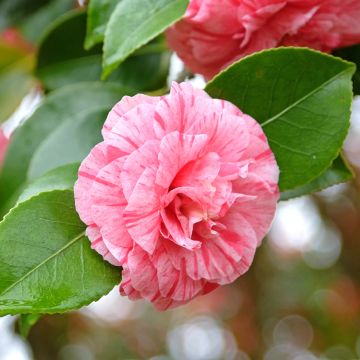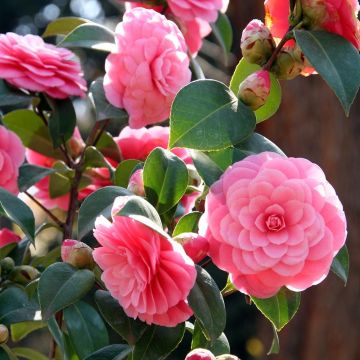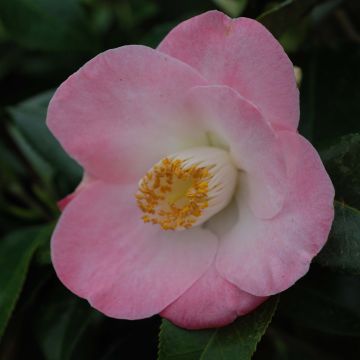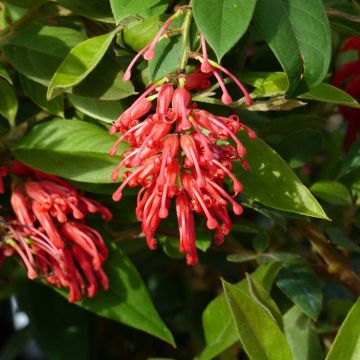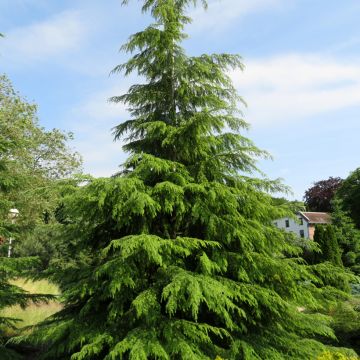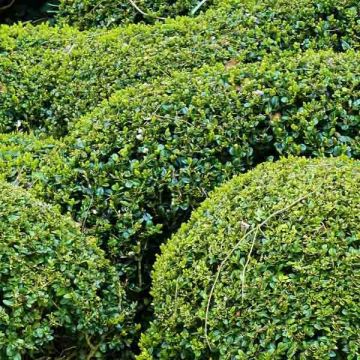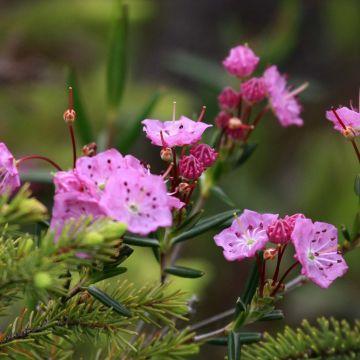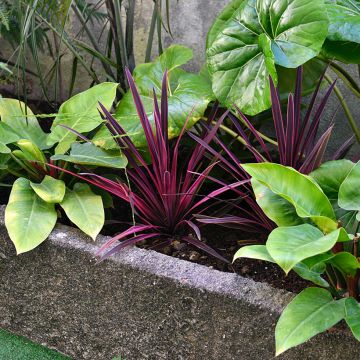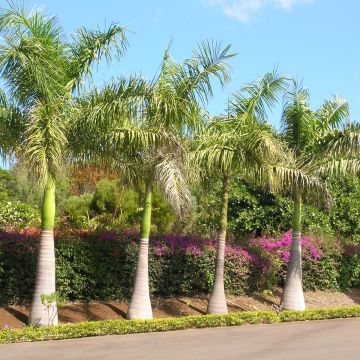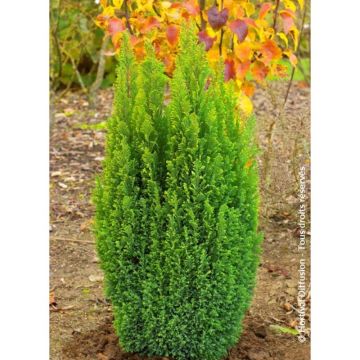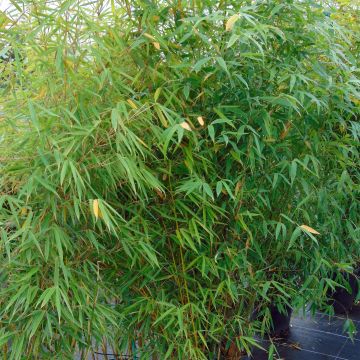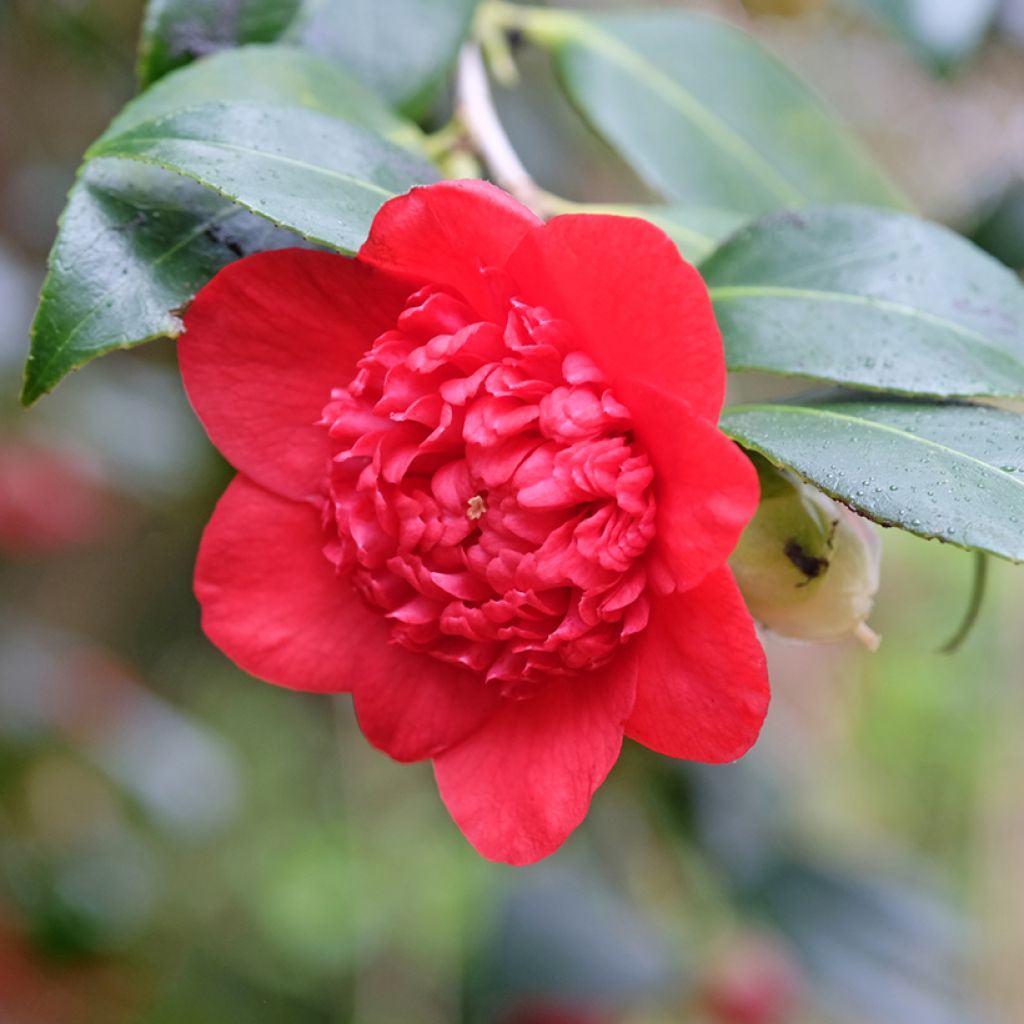

Camellia japonica Bobs Tinsie
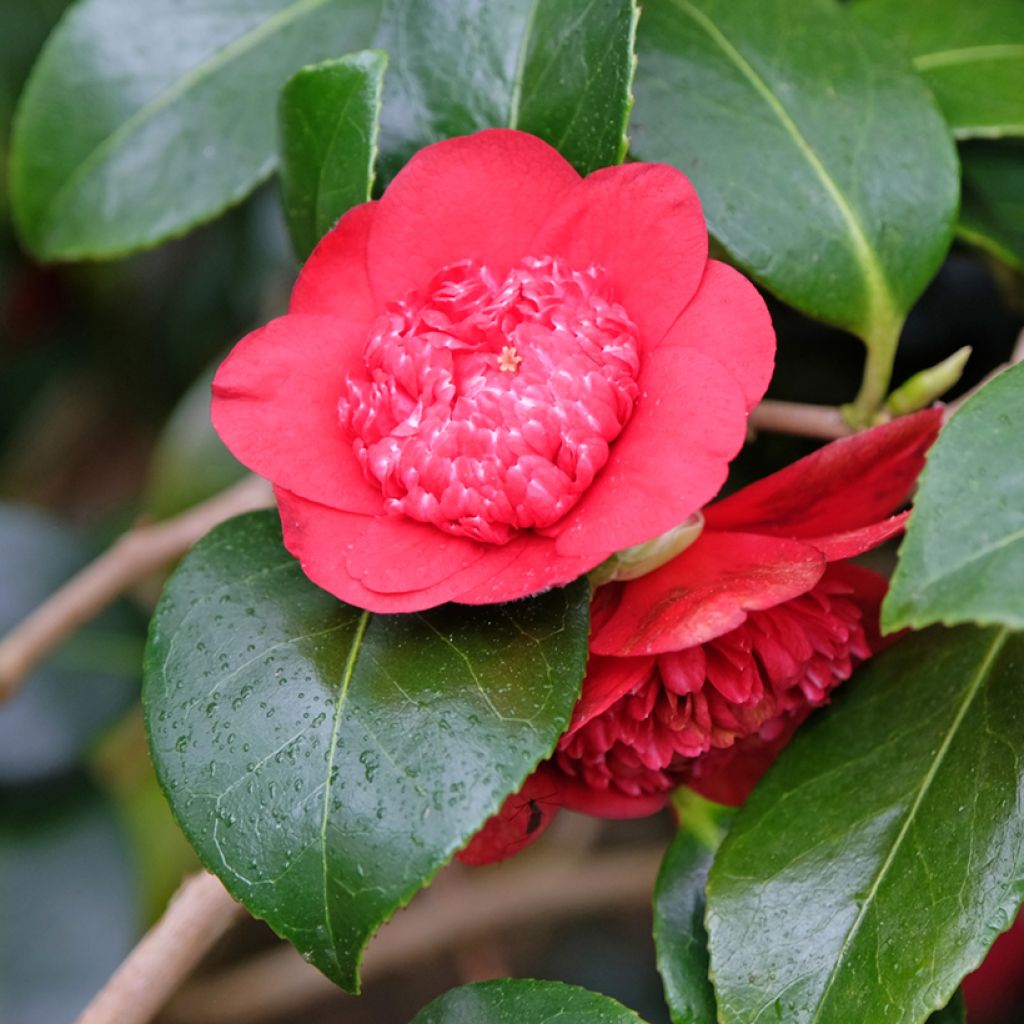

Camellia japonica Bobs Tinsie
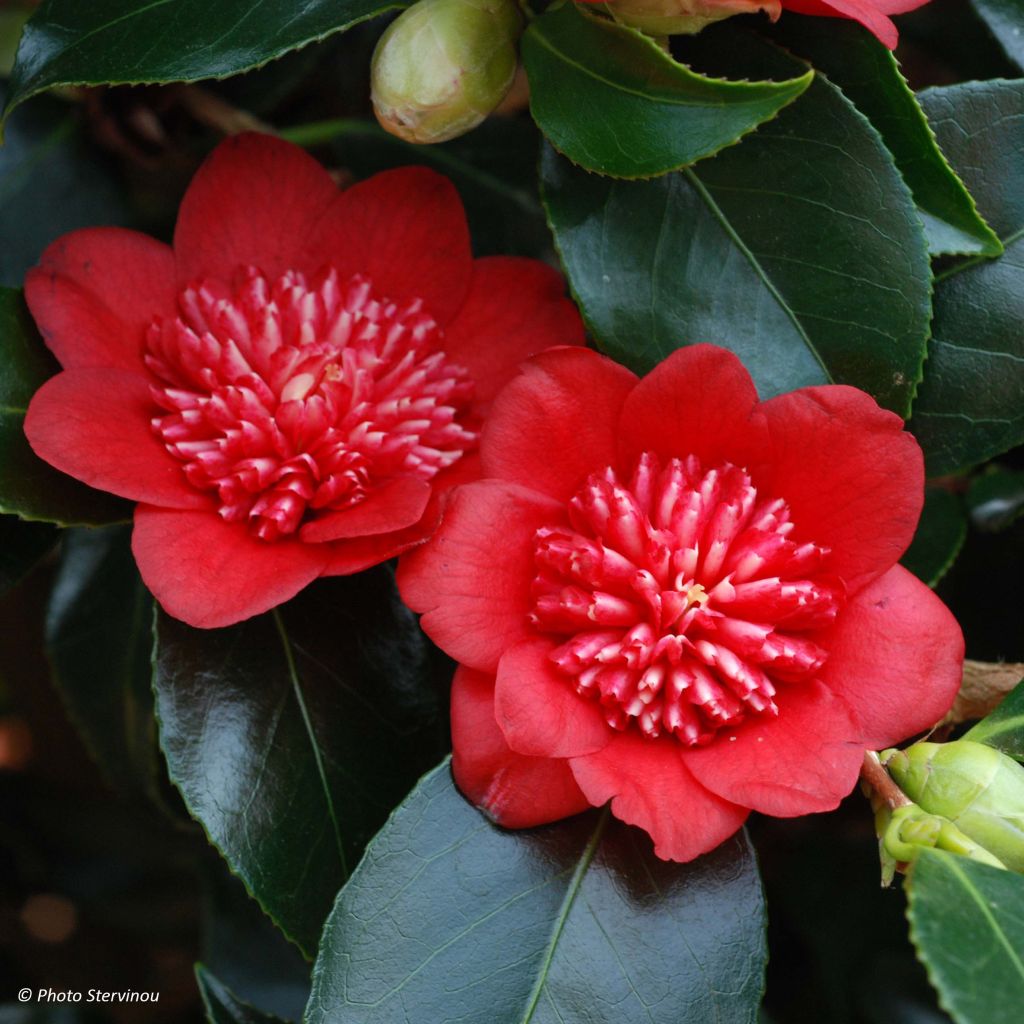

Camellia japonica Bobs Tinsie
Camellia japonica Bobs Tinsie
Camellia japonica Bob's Tinsie
Japanese Camellia, Rose of Winter
Camellia arrived in perfect overall condition! Full of promising buds and already 2 flowers that have bloomed after 15 days!
Céline , 09/01/2025
This item cannot be shipped to the selected country
Delivery charge from €5.90
More information
Schedule delivery date,
and select date in basket
This plant carries a 24 months recovery warranty
More information
We guarantee the quality of our plants for a full growing cycle, and will replace at our expense any plant that fails to recover under normal climatic and planting conditions.
From €5.90 for pickup delivery and €6.90 for home delivery
Express home delivery from €8.90.

Does this plant fit my garden?
Set up your Plantfit profile →
Description
Camellia 'Bob's Tinsie' is a type of Japanese camellia that is perfect for gardens or terraces. This plant produces small, beautiful anemone-shaped flowers that showcase its elegance. The flowers are bright red with a pom-pom of the same red shade in the centre, delicately tipped with white-silver. This bush is not very tall and has small, dark, and glossy leaves that enhance its late winter flowering. Camellia 'Bob's Tinsie' prefers partial shade, acidic and light soils, and humid climates.
The camellia 'Bob's Tinsie', introduced in the USA in 1962, belongs to the family of theaceae. It is a slow-growing bushy and erect shrub, with deep roots, which will reach approximately 1.20 m (3 ft 11 in) in height and 70 cm (27.6 in) in width at 10 years old under good growing conditions. From February to April, it produces numerous small anemone-like flowers, measuring 6 to 8 cm (2.4 - 3.1 in) in diameter. This shrub has a flower with a tightly packed centre. The centre contains numerous stamens that have transformed into petals. These petals are arranged in a wide dome and are scarlet and silky. There are 7 to 9 petals in the corolla. The shrub's leaves are evergreen and small. They are elliptical, 6 to 8 cm (2.4 - 3.1 in) long and 4 to 5 cm (1.6 - 2 in) wide. The leaves are very dark green and glossy on their upper side. They are leathery and have fine teeth at the edges. The shrub can tolerate cold temperatures down to -14°C in the ground. However, its flowering may be affected by snow, icy winds, and temperatures below -5°C (23°F).
The camellia plant known as 'Bob's Tinsie' is originally from Japan. It grows best in mild, humid climates and is often found in coastal areas. The plant prefers soil that is acidic, humus-rich and well-draining. Although it can handle full sun in coastal regions, it does better in partial shade, protected from strong winds and intense sunlight. In the garden, you can plant it in a shrub border, along with other acidophilous plants like Rhododendrons, Azaleas, Cornus Kousa, Japanese maples or Kalmia Latifolia. However, It would be unfortunate if other foliage or flowers overshadowed this beautiful flowering plant. Therefore, it should be given a special spot either near the entrance of the house or in a lovely pot on the terrace. In areas with very cold climates, storing the plant away during the winter is essential.
Report an error about the product description
Camellia japonica Bobs Tinsie in pictures


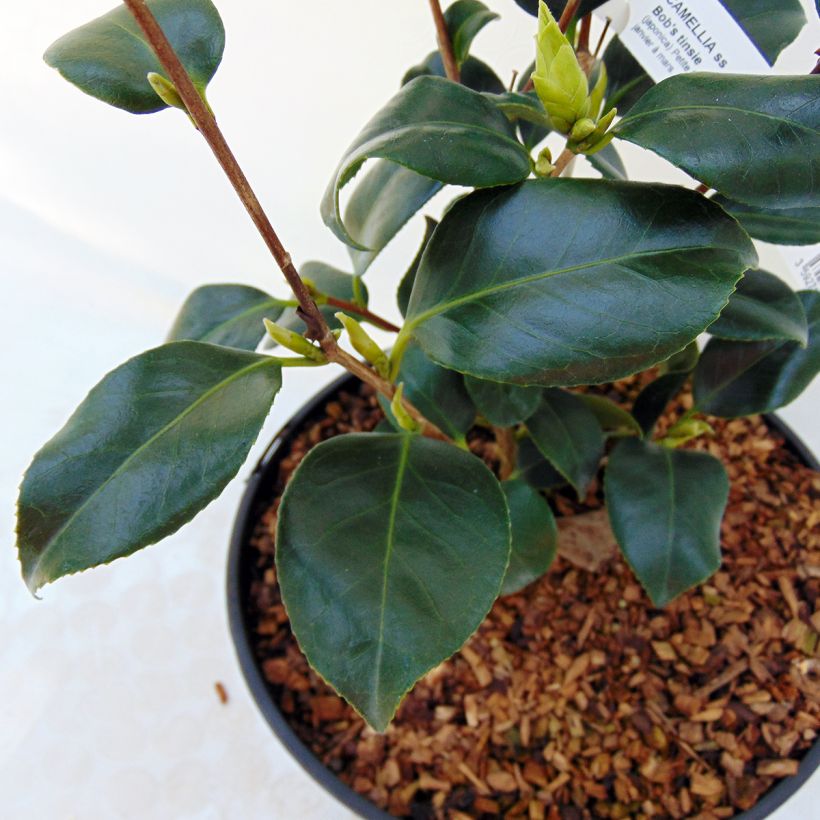

Plant habit
Flowering
Foliage
Botanical data
Camellia
japonica
Bob's Tinsie
Theaceae
Japanese Camellia, Rose of Winter
Cultivar or hybrid
Other Japanese Camellia
Planting and care
The Camellia 'Bob's Tinsie' plant grows well in full sun if the climate is favourable. However, it grows best in partial shade, protected from strong sunlight and winds. Choose cool, humus-rich, acidic, and well-drained soil in a position where it will get morning or evening sun. Plant the shrub so that the top of the root ball is covered with 3 cm of soil, and cover it with a 5 to 7 cm thick mulch of leaf compost and shredded bark in winter. Be careful of late frosts, which can damage flowers and buds. During dry periods, water the shrub to prevent the buds from dropping. It's best to plant the camellia in autumn for good root growth and better flowering in the first year. The plant can be susceptible to chlorosis and brown spots caused by burns on leaves exposed to full south, sooty mould, scale insects, and weevils.
Pruning is unnecessary, but if required, it should be done after flowering and before the emergence of new spring shoots. Most camellia hybrids cannot recover from severe pruning.
Planting period
Intended location
Care
-
, onOrder confirmed
Reply from on Promesse de fleurs
Evergreen shrubs
Haven't found what you were looking for?
Hardiness is the lowest winter temperature a plant can endure without suffering serious damage or even dying. However, hardiness is affected by location (a sheltered area, such as a patio), protection (winter cover) and soil type (hardiness is improved by well-drained soil).

Photo Sharing Terms & Conditions
In order to encourage gardeners to interact and share their experiences, Promesse de fleurs offers various media enabling content to be uploaded onto its Site - in particular via the ‘Photo sharing’ module.
The User agrees to refrain from:
- Posting any content that is illegal, prejudicial, insulting, racist, inciteful to hatred, revisionist, contrary to public decency, that infringes on privacy or on the privacy rights of third parties, in particular the publicity rights of persons and goods, intellectual property rights, or the right to privacy.
- Submitting content on behalf of a third party;
- Impersonate the identity of a third party and/or publish any personal information about a third party;
In general, the User undertakes to refrain from any unethical behaviour.
All Content (in particular text, comments, files, images, photos, videos, creative works, etc.), which may be subject to property or intellectual property rights, image or other private rights, shall remain the property of the User, subject to the limited rights granted by the terms of the licence granted by Promesse de fleurs as stated below. Users are at liberty to publish or not to publish such Content on the Site, notably via the ‘Photo Sharing’ facility, and accept that this Content shall be made public and freely accessible, notably on the Internet.
Users further acknowledge, undertake to have ,and guarantee that they hold all necessary rights and permissions to publish such material on the Site, in particular with regard to the legislation in force pertaining to any privacy, property, intellectual property, image, or contractual rights, or rights of any other nature. By publishing such Content on the Site, Users acknowledge accepting full liability as publishers of the Content within the meaning of the law, and grant Promesse de fleurs, free of charge, an inclusive, worldwide licence for the said Content for the entire duration of its publication, including all reproduction, representation, up/downloading, displaying, performing, transmission, and storage rights.
Users also grant permission for their name to be linked to the Content and accept that this link may not always be made available.
By engaging in posting material, Users consent to their Content becoming automatically accessible on the Internet, in particular on other sites and/or blogs and/or web pages of the Promesse de fleurs site, including in particular social pages and the Promesse de fleurs catalogue.
Users may secure the removal of entrusted content free of charge by issuing a simple request via our contact form.
The flowering period indicated on our website applies to countries and regions located in USDA zone 8 (France, the United Kingdom, Ireland, the Netherlands, etc.)
It will vary according to where you live:
- In zones 9 to 10 (Italy, Spain, Greece, etc.), flowering will occur about 2 to 4 weeks earlier.
- In zones 6 to 7 (Germany, Poland, Slovenia, and lower mountainous regions), flowering will be delayed by 2 to 3 weeks.
- In zone 5 (Central Europe, Scandinavia), blooming will be delayed by 3 to 5 weeks.
In temperate climates, pruning of spring-flowering shrubs (forsythia, spireas, etc.) should be done just after flowering.
Pruning of summer-flowering shrubs (Indian Lilac, Perovskia, etc.) can be done in winter or spring.
In cold regions as well as with frost-sensitive plants, avoid pruning too early when severe frosts may still occur.
The planting period indicated on our website applies to countries and regions located in USDA zone 8 (France, United Kingdom, Ireland, Netherlands).
It will vary according to where you live:
- In Mediterranean zones (Marseille, Madrid, Milan, etc.), autumn and winter are the best planting periods.
- In continental zones (Strasbourg, Munich, Vienna, etc.), delay planting by 2 to 3 weeks in spring and bring it forward by 2 to 4 weeks in autumn.
- In mountainous regions (the Alps, Pyrenees, Carpathians, etc.), it is best to plant in late spring (May-June) or late summer (August-September).
The harvesting period indicated on our website applies to countries and regions in USDA zone 8 (France, England, Ireland, the Netherlands).
In colder areas (Scandinavia, Poland, Austria...) fruit and vegetable harvests are likely to be delayed by 3-4 weeks.
In warmer areas (Italy, Spain, Greece, etc.), harvesting will probably take place earlier, depending on weather conditions.
The sowing periods indicated on our website apply to countries and regions within USDA Zone 8 (France, UK, Ireland, Netherlands).
In colder areas (Scandinavia, Poland, Austria...), delay any outdoor sowing by 3-4 weeks, or sow under glass.
In warmer climes (Italy, Spain, Greece, etc.), bring outdoor sowing forward by a few weeks.

































